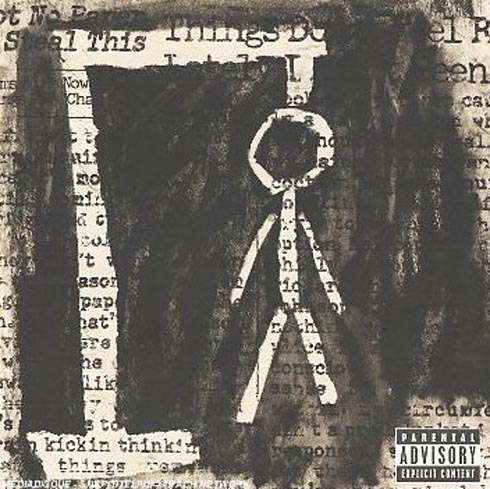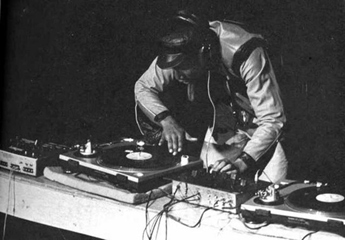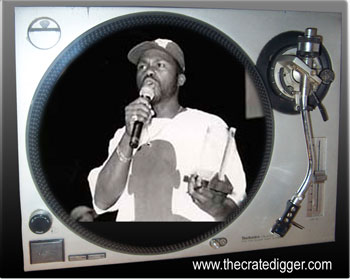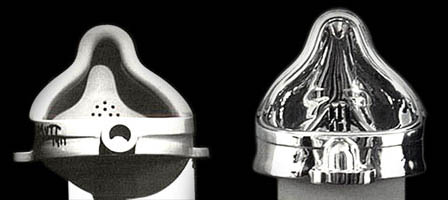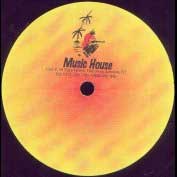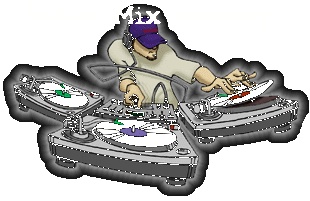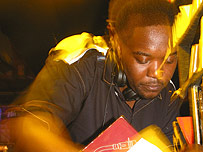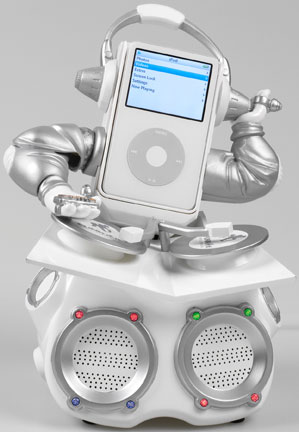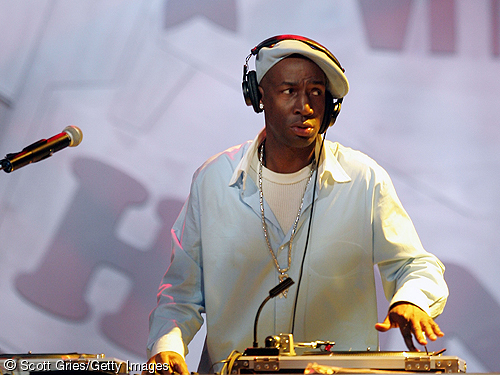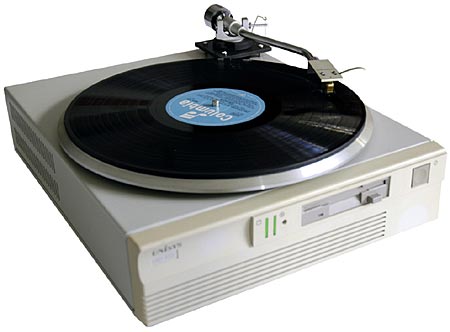Jump To: | 1973 | 1974 | 1975 | 1976 | 1977 | 1978 | 1979 | 1980 | 1981 | 1982 | 1983 | 1984 | 1985 | 1986 | 1987 | 1988 | 1989 | 1990 | 1991 | 1992 | 1993 | 1994 | 1995 | 1996 | 1997 | 1998 | 1999 | 2000 | 2001 | Random Facts |
1969
- Don Campbell had become a well-known street dancer in Los Angeles and invented a dance called “Campbellock”.
top
1970-1973
- Hip Hop “Grandfather” Afrika Bambaataa (Godfather of Hip-Hop culture, Father of the Electro Funk sound, founder of the Universal Zulu Nation, visionary, historian, and the Master of Records) starts to DJ.
- 1970 – The Last Poets, pioneers of hip-hop, record their self-named LP on Douglas Records, using a mixture of spoken word and jazz drumming and instrumentations.
- The origin of tagging, began in New York City in the early 70s by Vic, a mail courier who rode the local subways and buses to deliver his packages. He set a goal for himself to visit every subway and ride every bus in NY. (aka “All City”) He began to write his name (Vic) and his courier ID number (156) on every subway and bus he rode on.
- Phase 2 (bubble styles), Case 2, Tracy 168, Sly II, Chain 3, Lee 163d, Julio 204, Frank 207 and Joe 136 were many early NYC tag names as well as originators of various styles of piecing such as: bubble, wildstyle and computer style.
- No one knows who started graffiti during this era but we do know who made it famous. It was TAKI 183, a Greek teenager from Washington Heights named Demetrius.
- One of the most revered graffiti crew and earliest group to form was the Ex-Vandals.
- “Independent Writers” indicated their crew affiliation by writing “INDS” after their tags.
- Graffiti group “Wanted” was founded by TRACY 168 in 1972. Tracy was a white kid who was so tough that he was allowed to hang out with the Black Spades (At its peak in the seventies “Wanted” had over seventy members.)
- The Graffiti bombing movement began in the mid to late ’60s in Philly, PA by writers CORNBREAD and COOL EARL.
- Breakin’ makes its first appearance in the clubs, Plaza Tunnel and the Puzzle. The earliest moves were the “Drop” and the “In-and-Out” (Top Rocking).
top
1973
- Kool Herc, Father of Hip-Hop, aka Clive Campell, deejayed his first block party. He played soul, old funk and R&B records on his turntables. He was born in Jamaica and immigrated in ’67 (age 12) from Kingston where he brought his knowledge of the Jamaican soundsystem scene to the Bronx.
- Kool Herc played the ‘break’ or ‘getdown’ sections – the part where the break beat or percussion part of the song was played in its rawest form. But because the breaks of the songs weren’t very long, he expanded them by using two turntables with double copies of the record. The “breakbeats” he rocked layed the foundation for the B-Boys (Break-Boys – The dancers who rocked out on the dancefloor during these breaks.
- Official birthday of The Universal Zulu Nation is November 12,1973.
top
1974
- After seeing Kool Herc play at parties Grandmaster Caz (Cold Crush Brothers), Bambaataa (aka Kahyan Aasim – born 1957) and Grandmaster Flash (innovator of the quick mix and cutting, master of the “wheels of steel”) are heavily influenced by Herc’s DJ skills.
- Herc, Caz, Bambaataa and Flash play at block parties, parks, and house parties all over the Bronx neighborhoods.
- Afrika Bambaataa reorganized “The Organization” and renamed it to the “Zulu Nation“. Bam, a previous gang leader (Black Spades) and social activist, created a collective of DJs, breakers and graffiti artists to bring social conscienceness to hip hop. Five b-boys joined him who he called the Shaka Zulu Kings, there were also the Shaka Zulu Queens which along side the “Nigger Twins”, were the very first B-Boying crews ever.
- Graffiti Art has become widely visible on New Yorks subway cars.
- Influenced by the Carribean style of “toast” and “boast”, the pioneers began taking their turntables and speakers into parks and lightly rhyming over records. (“To tha beat y’all” or “And ya dont stop.”)
top
1975
- “Emceeing” evolved from party shouts like “‘Kool Herc is in the house and he’ll turn it out without a doubt”.
- Coke La Rock and Clark Kent (aka Tyrone Smith, not the DJ for Dana Dane) formed the first emcee team. They became known as Kool Herc and the Herculoids along with their DJ named Timmy Tim. (source: Phyllis Wilder)
- New York City was broke with a poorly maintained transit system. Bubble lettered throw up pieces appeared all over the cars.
- “Throw ups” peaked from ’75 thru ’77 from throw up kings IZ, PI, IN, LE, TO, OI, FI, CY, TEE, PEO, TI 149 and DY 167.
top
1976
- Bam’s first official DJ battle was against Disco King Mario at Junior High School 123 (a.k.a. the Funky 3).
- Graffiti artist Lee Quinones became well known for his subway car murals.
top
1977
- Hip Hop shifted more attention to the MCs while DJs Bam, Disco King Mario, Breakout, Casanova Fly, Disco Wiz, and Grandmaster Flash continued to perform around town.
- DJ Disco Wiz credited for being the first Latino DJ.
- Rock Steady Crew established by Bronx b-boys Jimmy D and JoJo.
- What “Uprock” was to New York B-Boys, “Locking” had become to the Electro-Boogie LA youth. It was started by Lockatron Jon and Shabba-Doo. Shabba was also responsible for introducing “Popping” to New York, which many claim to be the first, real hip-hop dance. (They even go as far as to say they were performing it in 1969.)
- German band Kraftwerk releases “Trans-Europe Express,” a trancelike synth anthem that becomes the primary source for Electro-Funk artists like Bamabaataa, Planet Patrol, Jonzun Crew, and Newcleus.
- The NYC Transit Authority established a giant subway car wash at its Coney Island train yard at annual cost of $400,000. (sprayed with petroleum hydroxide.)
- Graffiti “style revival” with a new wave of creativity in late 1977 from crews TDS, TMT, UA, MAFIA, TS5, CIA, RTW, TMB, TFP, TC5 and TF5.
- The rise of Grandmaster Flash and Furious Five, and Bambaataa’s various crews and MCS placed Herc at a disadvantage. One night Herc was stabbed three times at his own party and his career never fully recovered.
top
1978
- Bambaataa and Grandmaster Caz (aka Casanova Fly, Cold Crush Brothers) battle at the P.A.L. (Police Athletic League).
- Music industry coined ‘rap music’.
- In New York local dance crews added waves and smoother movements to the “Popping”.
- Charlie Robot who used to appear on “Soul Train” introduced the “The Robot” to the mainstream media.
- Noted B-Boy crews included Breakmachine, Uprock and the Motor City Crew, Dynamic Rockers, Rock Steady Crew, Floormasters Incredible Breakers and Magnificent Force.
- Lee Quinones abandoned painting his murals on the subway trains and started painting his murals on handball courts. (Handball court painting originated with TRACY 168.)
- In 1978, Kurtis Blow needed a DJ. Russell Simmons was Kurtis’ manager at the time and his brother Joseph (aka as Run of Run DMC) got the job. He got his name “Run” because he could cut between two turntables so quickly.
top
1979
- Bam jointly promotes shows with Kool Herc under the name Nubian Productions.
- The Sugarhill Gang (a pre-fab group assembled by record mogul Sylvia Roberts) records “Rapper’s Delight,” the first commercial rap record on Sugar Hill records.
- The Fatback Band hires radio DJ King Tim III to provide a rap for one of their B-sides (controversy continues over which is the “first” rap on a record).
- Kurtis Blow releases “Christmas Rappin” on Mercury Records, first rapper on a major label.
- Grandmaster Flash and the Furious Five puts out an obscure singles “Superrappin” on Enjoy.
- Mr. Magic’s Rap attack radio show on NJ radio station WHBI from 2 to 5 a.m. Saturday nights.
- Cold Crush brothers begin performing live shows – (Members: JDL, Charlie Chase, DJ Tony Tone, Grandmaster Caz, Almighty KayGee, and EZ AD.
- Spoonie Gee’s “Spoonin’ Rap” is released on Enjoy records.
- Funky Four Plus One, Grandmaster Flash and the Furious Five, Grand Wizard Theodore and the Fantastic Romantic Five were well established in the scene.
- RSC brings in Crazy Legs and Lenny Len into the Rock Steady Chapter.
- Jimmy Spicer releases “Adventures of Super Rhymes” on Dazz Records. 13 Minute imaginative storytelling song.
- The cult-classic movie “Warriors” is released which details street gangs all throughout NYCs 5 borroughs and shows heavy signs of subway graffiti.
top
1980
- Year of the record label battles. Enjoy and Disco Fever records pop on the scene.
- Kurtis Blow releases “The Breaks” on Mercury records (went on to sell more than a million copies).
- Kurtis Blow is the first hip hop artist to appear on national television. He peforms “The Breaks” on Soul Train on October.
- Sequence – All female crew off of Sugar Hill records hits the charts with the release of the single �Funk You Up� .
- Members of the High Times Crew are arrested for breakdancing at a Washington Heights subway — photos of the incident in the New York Post .
- Afrika Bambaata and his crew the Zulu Nation release their first 12″ on Paul Winley Records called “Zulu Nation Throwdown Pt. 1”.
- Blonde releases “Rapture”after meeting Fab 5 Freddy and others during the Mudd Club era. Lead singer Debbie Harry raps.
top
1981
- On February 14th, The Funky 4 plus One More performed their classic hit,”That’s The Joint” on NBC’s Saturday Night Live becoming the first hip hop Group to appear on national television.
- Dynamic Rockers and Rock Steady Crew battle at the Lincoln Center.
- Grandmaster Flash’s “Adventures on the Wheels of Steel” is the 1st rap record to bring the real sounds of live DJ scratching on wax.
- Disco Daddy and Captain Rapp’s “Gigolo Rap” (Rappers Rapp #1989) is the first west-coast rap on vinyl.
- ABC’s 20/20 shows the first national television coverage of the “Rap Phenomenon”.
- Beastie Boys are formed: Adam Horovitz aka King Ad-Rock (b. October 31, 1966) ~ Adam Yauch aka MCA (b. August 5, 1964) ~ Michael Diamon aka Mike D (b. November 20, 1965).
top
1982
- Afrika Bambaataa and the Soul Sonic Force releases “Planet Rock” on Tommy Boy records in May, the first big techno-funk hit with the Kraftwerk’s “Trans Euro Express” beat. (selling 620,000 copies in the US alone)
- Soul Sonic Force members: Bam, Jazzy Jay, Mr. Biggs (Ellis Williams), G.L.O.B.E. (John Miller), Whiz Kid and Pow Wow (Robert Darrell Allen).
- Grandmaster Flash and the Furious Five release “The Message” in June on Sugar Hill Records which peaked at #4 on the music charts.
- Roller Skating Jams – Sat. Feb 27th, 1982 at the Bronx Skating Rink by Nubian Productions.
- The Cold Crush Brothers appeared in the legendary South Bronx hip hop film Wild Style.
- Popular graffiti artist Futura 2000 puts out a record with himself rhyming called “Futura 2000 and His Escapades” with music done by the Clash, signifying the beginning of the rock/rap fusion.
- First international hip hop tour in Europe with Bambaataa, Fab 5, Rammellzee, GrandMixer DXT (formerly D.ST.) & The Infinity Rappers, Rock Steady Crew, the Double Dutch Girls, and Graffiti Artists Phase 2, Futura, and Dondi. At this point parts of Europe and Asia became exposed to the culture, which resulted in its fast growing popularity worldwide.
- George Clinton releases the legendary funk track “Atomic Dog”.
- Wild Style, co-created by Fab 5 Freddy and directed by Charlie Ahearn, is released featuring the first full-length account of all four elements in hip hop culture: Graffiti, DJ-ing, MCing, and B-boying. The actors are played by the real members of New York’s hip hop scene including graffiti legends Lee, Zephyr, Fab 5 Freddy, Lady Pink, Crash, Daze, Dondi and showcases performances from Grandmaster Flash, Grandwizard Theodore, DJ AJ, Grandmixer D.S.T and Rock Steady Crew members: Crazy Legs and Frosty Freeze. The soundtrack was produced by Fab 5 Freddy and Chris Stein with performances by Double Trouble, Cold Crush Brothers, Fantastic Freaks, Chief Rocker Busy Bee, Rammellzee and Shockdell.
top
1983
- Herbie Hancock and Grandmaster D.ST. cut “Rockit,” the first hip-hop/jazz cross-over.
- Afrika Bambaataa records “Looking for the Perfect Beat” (Tommy Boy single #831), which features the first recorded use of digital sampling on Tommy Boy.
- Three punker white kids from Manhattan named the Beastie Boys put out a single called “Cooky Puss”, which is a crank call to a Carvel Ice Cream store laid over a funky beat (later to be signed to Def Jam).
- A Documentary of subway graffiti in New York “Style Wars”, filmed by photographer Henry Chalfant and directed by Tony Silver, is aired on PBS featuring several interviews with popular graffiti writers of the time including Crash, Daze, Dondi, Zephyr, Revolt, Kase2, Skeme, Haze and Seen as well as interviews with the Metropolitan Transit Authority and NYC Mayor Ed Koch. More raw footage of hip hop’s other elements in Rock Steady Crew, Busy Bee and Grandmaster Flash.
- Ice T puts out his first singles, “Cold Winter Madness” and “Body Rock/Killers” which are considered some of the first West Coast gangster raps.
- Malcolm McClaren, the Sex Pistol’s managerial mastermind, organizes a group called the World Famous Supreme Team and puts out a song co-produced by synthpop veteran Trevor Horn called “Buffalo Gals”. McClaren was influenced to get into hip hop by meeting Bam and the Zulu Nation during the previous year.
- The Rock Steady Crew appeared in “Flashdance” the movie. They visited the UK and impressed a bunch of kids in Manchester who later form the Kaliphz crew.
- Grandmaster Flash sued Sugar Hill Records for $5 million in royalties. The lawsuit resulted in the group splitting up.
- Run DMC releases “It’s Like That b/w Sucker MC’s” which put a symbolic end to old school rap styles even though they continued for a few more years.
- Originally known as the Disco 3, Brooklynites Mark “Prince Markie Dee” Morales, Damon “Kool Rockski” Wimbley, and Darren “Buff the Human Beat Box” Robinson won a talent contest at Radio City Music Hall in 1983, thanks in part to Robinson’s talent for using his mouth to improvise hip-hop rhythms and a variety of sound effects aka “Beatboxin”.
- Grand Master Flash and Melle Mel’s anti-cocaine single “White Lines (don’t do it)” became a classic rap anthem and international hit.
- Michael Jackson first performs the moonwalk on Motown 25 TV Special.
- Schoolly D (aka Jesse B Weaver Jr. from Baltimore, MD) records his first singles �Gangster Boogie� and �Maniac� with his DJ Code Money.
- Afrika Islams “Zulu Beats” airs on WHBI; Red Alert first appears on 98.7 KISS FM.
- The NYC Breakers were formed by Michael Holman (Manager) in late 1983 adding members like “Flip Rock”,”Icey Ice”,”Powerful Pexter” to the existing “Floormasters” crew. The “Floormasters” crew did many shows like “That’s Incredible”, Merv Griffin and others. The NYC breakers travelled the world performing and even performed for President Reagan as well as appearing in the movie Beat Streat.
- Breakin’ and Enterin’, a documentary about California poppin’ and lockin’ filmed in Los Angeles airs on cable TV, featuring Shabba Doo, Boogaloo shrimp, Pop ‘n’ Taco, Blue City Strutters (aka Boo Ya Tribe), and Ice-T, Egyptian Lover, Chris “The Glove” Taylor.
- Ice T releases his first singles, “Cold Winter Madness” and “Body Rock/Killers”, some of the first West Coast gangster raps.
top
1984

- “It’s Yours” (Cat. PT-104, 101 BPM) by T La Rock & Jazzy Jay is first record on Def Jam, on the vanity PARTY TIME label (Arthur Baker’s Streetwise subs.). This was written by Kevin Keaton & Rick Rubin and recorded at Power Play studios. It was followed up by LL’s “I Need a Beat” and the rare “Beastie Groove” by the Beastie Boys.
- The rap group UFTO records “Roxanne, Roxanne,” a diss on a fictional woman named “Roxanne.” Over 100 “response” records are made, including “Roxanne” Shante’s (14-years old) single called “Roxanne’s Revenge”, originally recorded in Marley Marl’s living room which sold over 250,000 copies in the New York area alone.
- While touring in Oakland, UTFO asks a young local MC named Too Short to open up for them.
- The Fresh Fest concert tour, featuring Run-D.M.C., Kurtis Blow, Whodini, Fat Boys, and Newcleus, is hip-hop’s first big money making tour ($3.5 million for 27 dates).
- Los Angeles’s KDAY becomes the first rap-only radio station in the US
- Rick Rubin and Russell Simmons form Def Jam records.
- Michael Jackson does the moonwalk on the Grammy’s and the whole world thinks he’s a breaker. He actually learned it from some LA poppers.
- Breakdancing (as the media calls it) goes global via Lionel Richie’s performance at the Closing Ceremony of the 1984 Olympics in Los Angeles.
- Kool Herc played his last Old School party in 1984.
- Doug E. Fresh, known as “The Entertainer” releases “The Original Human Beatbox” (Vindertainment, 1984 [004])
- Michael Holman (manager of The NYC Breakers) creates hip hop’s first TV dance show, “Graffiti Rock” with special guests – Run DMC, Shannon, The NYC Breakers, Kool Moe Dee and Special K of The Treacherous Three (who also battled Run DMC on the show). It is cancelled after only one show. Now an Actress, Debi Mazar (B-Girl from Queens) has her first TV appearance.
- Schoolly D releases �Gangster Boogie� while he is still working in a shoe shop.
- The movie “Beat Street” by Harry Belafonte is released which features Kool Herc, Doug E. Fresh, Kool Moe Dee. Legendary B-Boy battle at the Roxy with Rock Steady Crew and NYC Breakers is the highlight of the film.
top
1985
- Salt ‘n’ Pepa makes its first appearance on wax on Super Nature’s “The Show Stopper”.
- “The Show” by Doug E. Fresh and the Get Fresh Crew changes the sound of hip hop. Ricky D’s laid back style was unheard of at that point.
- Sugar Hill Records is forced into bankruptcy and ceases to be active in the record industry.
top
1986
- “Eric B. is President” drops and again changes the sound of hip hop forever; it forces Emcee’s to step up their skills.
- Run-D.M.C. releases a hip-hop version of Aerosmith’s “Walk This Way,” and hip-hop breaks into the pop charts, MTV, and mass media all at once.
- The Juice Crew’s “The Bridge” and Boogie Down Productions’ “The Bridge is Over” start one of the longest-running payback battles in hip-hop history.
- Schoolly D releases �PSK-What does it mean� independently. The acronym stands for Park Side Killers, a Philly Gang D was affiliated with. Unwittingly Schoolly D invents �Gangsta Rap” or “Reality Rap”.
- Houston, Texas native James Smith brings together “The Geto Boys”. The original lineup consisted of MCs Raheim, Jukebox, DJ Ready Red, and Sir Rap-A-Lot. The group also featured Little Billy, a dancing dwarf who later joined full-time as Bushwick Bill. Following a short break-up in 1988, Smith called on local rhymers Willie D and multi-instrumentalist Akshun (later known as Scarface) to join the lineup.
- The Beastie Boys — Adam �King Ad-Rock� Horowitz (vocals/guitar), Michael �Mike-D� Diamond (vocals/drums) and Adam �MCA� Yauch (vocals/bass), release their debut album, LICENSED TO ILL (1986; Def Jam; Producer: Rick Rubin), moving from hardcore to rap.
- Kool Keith, Ced Gee, and DJ Moe Love emerge as Ultramagnetic MC’s. They are the first group to employ a sampler as an instrument.
top
1987
- Boogie Down Productions’ “Criminal Minded” LP is released.
- DJ Scott LaRock killed in the South Bronx. (I think from an argument over a female.)
- “The Wop”, “California Prep”, “FILA”, “Smurf”, “Troop”, “Hammer” and “2-Hype” freestyle dances became part of the scene.
- Scott La Rock was killed intervening in a beef D-Nice had with some kid at 164th and University in the Bronx. He went to go negotiate with the kid and was shot from a tenement window as he sat in his jeep.
- First Technics World DJ Champion – Chad Jackson from the UK. View Archive of Past Winners
- Public Enemy releases their debut album “Yo! Bum Rush The Show”. The group Public Enemy included Chuck D (born Carlton Ridenhour on August 1, 1960 in NYC), Flavor Flav (born William Drayton on March 16, 1959 in NYC), the “Minister of Information” Professor Griff (born Richard Griffin) and DJ Terminator X (born Norman Rogers). PE came together around an Adelphi College, Long Island radio show.
top
1988
- Def Jam founders Russell Simmons and Rick Rubin split up; Simmons opts for distribution through CBS/Columbia Records, while Rubin goes on to found Def American.
- Yo! MTV Raps first airs, bringing hip-hop to a wider main stream audience.
- N.W.A.’s Straight Outta Compton goes Gold, popularizing the ‘gangsta’ school of rap.
- Brooklyn Born “Big Daddy Kane” (aka Antonio Hardy) releases ‘Ain’t No Half Steppin’ from his album ‘Long Live The Kane’.
- Marly Marl brought Big Daddy Kane out, who started as a ghostwriter for several rappers. BDK ran with the Juice Crew (DJ Mister Cee, Scoob & Scrab Lover). Big Daddy Kane emerged as hip-hop’s first sex symbol.
- Ultramagnetic MC’s release “Critical Beatdown” on Roadrunner Records.
top
1989
- Controversy over Public Enemy member Professor Griff’s anti-Semitic remarks causes a media madness. Griff eventually leaves the group and forms the Last Asiatic Disciples.
- On May 12, 1989 the MTA declared a victory over graffiti, removing all marked subway cars from line service.
- “Cowboy” of Grandmaster Flash and the Furious Five died after spending nearly two years hooked on crack. He was 28 years old. (RIP)
- Tribe Called Quest releases “Description of A Fool” in August 1989. Tribe consisted of Q-Tip (b. Jonathan Davis, 20 November 1970, New York), DJ Ali Shaheed Muhammed (b. 11 August 1970, Brooklyn, NYC), Jarobi and Phife Dog (b. Malik Taylor, 10 April 1970, Brooklyn, NYC).
- ATCQ formed at school in Manhattan, NYC, where they started out as part of the Native Tongues Posse, with Queen Latifah and the Jungle Brothers, and were given their name by Afrika Baby Bambaataa of the Jungle Brothers.
- As members of the Native Tongues Posse ATQC were promoters of the Afrocentricity movement, which set out to make African Americans aware of their heritage.
- Dallas rapper “The D.O.C.” releases “No One Can Do It Better” produced by Dr. Dre. This album was still burning up the charts when a car crash almost killed the D.O.C., greatly hindering his rapping abilities.
top
1990
- Return of the B-Boy in the UK. B-Boys are back. There is massive interest in the dance form within British Hip-Hop culture. The revival here is led by crews such as Born To Rock, UK Rock Steady Crew and Second To None.
- DJ Stretch Armstong and Bobbito” show launches from 1990 -’98 on WKCR 89.9FM in New York.
- Controversy over 2 Live Crew’s ‘As Nasty as they Wanna Be’ gets a Florida record store owner and Luther Campbell arrested (both trials eventually end with acquittals).
- 2Pac joins Digital Underground as a roadie and dancer.
- Schoolly D appears on the Phil Donahue Show to talk about �Money & Rap music�.
top
1991
- Busta Rhymes appears on A Tribe Called Quest’s classic “Scenario”, his style and voice is so outrageous and wild, making a new eccentric delivery in lyricism.
- KDAY is sold, and its All-Rap format ends.
- DJ David (Germany) wins the DMC World DJ Championship two years in a row (’90 and ’91).
- N.W.A’s follow-up record, 1991’s “Niggaz4Life,” sold 954,000 copies in its first weeks of release to become the first hardcore rap album to hit No. 1 on the charts, despite being banned by some record stores and seized by English authorities as obscene.
- Cypress Hill released its self-titled debut �Cypress Hill�. The members B-Real, DJ Muggs and Sen Dog became supporters of hemp legalization and official musical spokesmen for the National Organization to Reform Marijuana Laws.
top
1992
- The Disposable Heroes of Hip-Hoprisy record “Language of Violence,” the first anti-gay-bashing rap.
- Rock Steady DJs (DJ Qbert, DJ Apollo and Mix Master Mike (USA) take DMC World. (Apollo credited for inventing team battling)
top
1993
- Dr. Dre’s “The Chronic” goes multi-platinum and starts a gangsta bandwagon.
- Wu Tang Clan drops the platinum debut album Enter The Wu-Tang (36 Chambers). Staten Island’s Wu-warriors: Prince (The RZA) Rakeem, Raekwon, Ol’ Dirty Bastard, Method Man, Ghost Face Killah, Genius (GZA), U-God, Master Killa and Inspectah Deck.
- The Dream Team (DJ Qbert and MixMaster Mike aka Invisible Skratch Piklz) win World DJ Championship.
- HOT 97 switches from a dance format to become “Where Hip Hop Lives”, heralding the coming of DJ Funkmaster Flex.
- Cypress Hill released its second album, Black Sunday, which debuts at #1 in Billboard.
- Mobb Deep members Prodigy and Havoc (Queens, NYC) released their debut album, Juvenile Hell, on the 4th & Broadway label.
top
1994
- Common (aka Common Sense) releases �Resurrection� pure hip-hop is resurrected; Common is acclaimed as one the best lyricists of all time.
- Del�s �No Need for Alarm� is released in December; he used multi-syllabisms, which soon start a whole new form of rhymes in the underground community.
- November: Tupac shot in a New York recording studio 5 times and robbed of $40,000 worth of Jewlery Sentenced to prison where he served 8 months in New York Rikers Island.
- NAS aka Nassir Jones went Gold with his first album “Illmatic” but it was “If I Ruled the World” with vocals by Lauryn Hill that pushed him into the hip-hop mainstream spotlight.
- Warren G aka Warren Griffen (half brother of Dr Dre) debut album “Regulate – G-Funk Era” sold over 4 million copies. “Regulate” appeared on the Above the Rim soundtrack and hit number 2 on the music charts.
top
1995
- First B-Boy Summit that is documented is held in San Diego, CA hosted by AsiaOne, RSC.
- Rawkus becomes one the biggest underground label ever with groups like Company Flow, and BlackStar; they release several prolific album like �Funcrusher�s Plus� (which later with formation of Def Jux starts a whole new underground movement) and �BlackStar� which shoots hip-hop commercially. Co. Flow eventually leaves Rawkus; Rawkus signs with MCA and closes the doors.
- Indie label Fondle Em records formed by Bobitto features Cenobites (Godfather Don and Kool Keith). Later to sign Company Flow.
- Queen Latifah won a Grammy Award in the category of best rap solo performance for her hit �UNITY�.
- Suge Knight posts Tupac’s $1.4 million bail, Tupac signs with Death Row Records.
- Eazy-E (aka Eric Wright) of NWA passed away of AIDS on the 20th of March at age 31. He entered LA’s Cedars-Sinai hospital on 24 February for a lung problem. He was the first rapper ever to admit having full-blown AIDS.
- Legendary Beatboxer Darren “Buff the Human Beat Box” Robinson of the Fat Boys died of a heart attack on Dec 10, 1995 in Rosedale, NY. (RIP)
- Christopher Wallace aka Notorious B.I.G is featured in the “Unsigned Hype” column of The Source magazine. Former Source editor, Matty C, played Biggie’s tape for Puffy and the rest is history. His single “One More Chance” from the debut album “Ready To Die” went straight to number 1 in the US while the album went multi-platinum.
- Blaze Battle Face-Off 2000 World Championship airs on HBO, Eyedea won the contest’s Micman trophy and an official Blaze Battle leather jacket.
top
1996
- The original Dr. Octagon album, “Dr Octagonecologyst”, re-launched Kool Keith in the late ninties and made a star of its producer, Dan The Automator. The album production pioneers a new form of sampling never heard before.
- On September 7th, 1996, 2Pac was shot in Las Vegas, NV after watching a Mike Tyson fight. On Sept 13th he died at 4:03pm. (RIP)
- First DMC World DJ Champion – DJ Cheese (USA).
- Bone Thugs-N-Harmony break the record for fastest rising single with their hit “Tha Crossroads”, the spot was previously held by The Beatles for “Can’t Buy Me Love”.
top
1997
- Scribble Jam (which started in �96) becomes a successful underground event displaying stars such as Slug, Dose One, Eminem, Sage Francis and others.
- On March 9, 1997, Notorious B.I.G. (aka Biggie Smalls, whose legal name was Christopher Wallace) was gunned down while he was leaving a star-studded Vibe magazine party after the Soul Train Music Awards. (Sean “Puffy” Combs was riding in the vehicle ahead of him.) (RIP)
- Missy �Misdeanor� Elliott won 2 Billboard Video Music Awards for Best Rap Clip and Best New Rap Artist Clip (“The Rain”).
top
1998
- Dr. Dre signs Eminem to his Aftermath label after hearing the rapper freestyling on a Los Angeles radio station. The Slim Shady LP is released on Feb. 23, 1999 and hits No. 2 on the Billboard charts within weeks.
- People included Lauryn Hill as one of the “25 Most Intriguing People of 1998.”
- Interscope Records, parent company of Death Row Records, severs ties with Death Row. Dr Dre, founder, president and producer leaves months before the announcement.
top
1999
- Anticon releases �Music for the Advancement of Hip-Hop�; hip-hop music involves into a new form.
- Lauryn Hill was the first woman to nominated for 10 awards in Grammy history, and won 5 of them, Best Female R&B Vocal Performance (“Doo Wop”), Best New Artist, Best R&B Album and Best R&B Song (songwriter).
- On Dec. 27, 1999, at the Club New York in Manhattan, shots that injured three people were fired after a patron reportedly threw money in Combs’ face.
- Big L (aka Lamont Coleman), was shot and killed Feb. 15 near his home in Harlem. (RIP)
top
2000
- April 26, 2000, Andre Young, aka Dr. Dre, has filed a lawsuit against online music firm Napster, alleging the company violated his copyrights by allowing users to trade digital copies of his songs. (Go Napster!)
- DJ Craze wins the Technics DMC World DJ Championship 3 times in a row: 1st Place – Craze(USA), 2nd Place – DJ Dexta(Australia), 3rd Place – Mr Thing (UK).
- Invisible Skratch Picklz (ISP) break up. DJ Apollo, Vinroc and Shortcut form TripleThreatDJs to rock hip hop shows (album coming in Fall ’01) and Qbert continues as a scratch DJ / producer.
top
2001
- LL Cool J is beign sued for his song 1997 “4, 3, 2, 1.” by four of Furious Five members. They say the song used a sample from their 1979 hit “SuperRappin'” without permission.
- KRS ONE’s album to drop in March: “The Sneak Attack.” The album will be brought to us in March by the indie label In The Paint. Listen to the new single: “The One“.
- Hip-Hop legends KRS-One, Grand Master Flash and Afrika Bambaata, along with the Reverend Al Sharpton, recently gathered to announced the beginning of the fourth annual Hip-Hop Appreciation Week, scheduled to begin in May.
- Eminem plead guilty to one of two felony charges his facing from an incident last June when he allegedly pistol-whipped a man he caught kissing his wife. Prosecutors dropped the felony assault charge in exchange for Em’s guilty plea on carrying a concealed weapon. Sentencing is set for April 10.
- DJ Qbert releases animated movie “Wave Twisters”. Official selection at The Sundance Film Festival, 2001. Based on Q-Bert�s groundbreaking LP, Wave Twisters Episode 70 Million: sonic wars within the protons. Animated into a feature film by acclaimed graffiti artist DUG-ONE. This is the first feature length graffitti art animated film in history.
- 2Pac’s “Until The End Of Time” debuts at No. 1 on Billboard 200 albums chart after selling more than 426,800 copies in its first week.
- Puff Daddy revealed in an exclusive post-trial interview with MTV that he has changed his name to P. Diddy.
- Beastie Boys Debut album “Licensed To Ill” was certified 9x platinum in September.
top
Random Facts:
- Frosty (RSC) invented the Death Drop Freeze, which bears part of his name.
- Grand Wizard Theodore (DJ Mean Gene’s brother) is the creator of the scratch and needle drop. As the legend goes Theo was at home practicing on his turntables, and created these moves purely by accident. His mom came into his room asking him to turn down the music, and he held the record with his hand. He moved it back and forth and the rest is HipHop history.
- Caz and Wiz have been DJ partners, b-boy hook-ups and best friends since 1974 � together they witnessed the birth, evolution and transformation of the rap community.
- Break beats picked up in popularity as emcees sought to rap longer at these parties.
- 1920 – On August 10th, Mamie Smith records “Crazy Blues” (Okeh 4169), first blues recording and first commercial recording of an African-American musical tradition.
- 1956 – James Brown cuts his first record, “Please Please Please” (Federal F12258).
- 1969 – James Brown records “Say It Loud — I’m Black and Proud!” (King 6187), as well as “Funky Drummer” (King 6290), whose syncopated drumbeat (by Clyde Stubblefield) later becomes the most-sampled track in hip-hop history.
- 1974-80 – “Disco” — essentially a homogenized and watered-down funk, is embraced by the entertainment industry, and dominates both the airwaves and the club scene.
- “Lovebug Starski” was the one who came up with the notion “Hip Hop”, which he used in his rhymes and the movement was untitled until Afrika Bambaataa started calling it “Hip-Hop”. Starski was probably the best party rocker of his time, he was one of the first DJ MC’S, and was also known for coining the mc rhyme phrase “HIP HOP SHOOWOP DA BOP”.
- Some argue that “Space Cowboy” coined the term “Hip Hop” in his rap:�I said a hip hop
the hippie the hippie to the hip hip hop
& you don�t stop the rock it to the
bang bang boogie�say you jumped
the boogie to the rythymn of the boogie
the beat�
- The main elements of hip hop culture are known as MCing (Rapping), DJing, Writing (Aerosol Art), B-Boying / B-Girling (Breaking).
- It was the late 60s and early 70s when people started a sort of b-boying. Their dancing was called “Good Foot” from a James Brown song of the same name. The “Good Foot” was the first freestyle dance that incorporated moves involving drops and spins, and resembled the beginnings of breaking.
- Kung Fu stars like Bruce Lee and other martial artisits had a major influence on b-boy culture. The popularity of Kung Fu films during the mid and late 70s around the world and esp. in New York City, has had a great impact on b-boy styles and moves. For example, windmills originated from a kung fu move which is used to get up from the floor. Crazy Legs of the Rock Steady Crew incorporated this concept into his “dead man freeze” move then decided to make it continuous and by repeating this move, windmills were born.
- In the 50’s graffiti was used by gangs to denote territory.
- Over the years B-Boys have been influenced from Capoiera, an Afro-Brazilian martial art, and have integrated these moves into their routines.
- DJ Kool Herc coined the phrase “B-Boy” in 1969, when he performed at venues, such as the Hervalo in the Bronx, he would shout loudly “B-Boys go down!” and this was a cue for the dancers to go-off. Some suggest B-Boys stands for “Boogie Boy” while others insist it means “Break Boy” or “Bronx Boy”.
- Besides giving parties at the Recreation center at his home address and the Hervalo, the other club he rocked was called Sparkle located at 174th Street and Jerome Ave in the Bronx. (source: Phyllis Wilder)
- The “Uprock”, performed correctly, can look very much like a scene snatched from a old Kung-Fu movie. “Uprock” was probably the first form of Breaking.
- “Locking” became part of the broad disco culture. (remember John Travolta’s “Saturday Night Fever”).
- James Brown had hatched the “Goodfoot” dance-style which led to “Floating” which led, yes, to the “Moonwalk”.
- Graffiti artist SUPER KOOL 223 of the Bronx (commonly credited for doing the first ‘masterpiece’) replaced the narrow dispersion cap on his spray paint with a wider spraying cap found on a can of oven cleaner.
- Some other important Graffiti Writing groups which existed in NYC were The Bad Artists, the Writers Corner 188, the Magic, Inc., the Three Yard Boys, the Vanguards, the Ebony Dukes, the Mad Bombers, the Death Squad, the Mission Graffiti, the Rebels, the Wild Style, the Six Yard Boys, and the Crazy 5.
- DJ battles (competition) in the Bronx, they would occur first in Jamaica with one DJ trying to out play another DJ. The competition boiled down to who had the loudest system and the most original records.
- Probably the most famous tag in Graffiti culture was “Stay High 149”. He used a smoking joint as the cross bar for his “H” and a stick-like figure from the TV series “The Saint”.
- The term “Style Wars” stemmed from RIFF 140, who would take ideas from other writers and improve them to the next level.
- One day Herc was late setting up and Bam continued to play longer than he should have. Once Herc was set up he got on the microphone and said “Bambaataa, could you please turn your system down?” Bam’s crew was pumped and told Bam not to do it. So Herc said louder, “Yo, Bambaataa, turn your system down-down-down.” Bam’s crew started cursing at Herc until Herc put the full weight of his system up and said, “Bambaataa-baataa -baataa, TURN YOUR SYSTEM DOWN!” And you couldn’t even hear Bam’s set at all. The Zulu crew tried to turn up the juice but it was no use. Everybody just looked at them like, “You should’ve listened to Herc.” – Jazzy Jay of the Zulu Nation.
- Kool Herc lived at 1520 Sedgwick Avenue. He threw many of his first parties as a DJ in the recreation room.
- US Girls were never really a major group but Sha-Rock (Sharon Green), Lisa Lee, Debbie Dee did tear it up in the film “Beat Street”.
- Grandmaster Flash is credited with using the electronic beat box, which he put it between his turntables and use it to play the beat between mixing records.
- No DMC World Champions have ever been banned or retired from competing – don’t believe the hype!
- The Fifth element of hip hop: The Beatbox, very often overlooked by the hip hop community but much needed respects due. Some noted beatboxers: Doug E. Fresh (La Di Da Di, The Show), Biz Markie (Make The Music With Your Mouth, Biz), Ready Rock C (Human Video Game, My Buddy) of DJ Jazzy Jeff and the Fresh Prince, Buff aka Darren Robinson (The Human Beatbox, Stick Em) of the Fat Boys (RIP) who introduced beatboxing on wax in 1984 with “The Human Beatbox”.
- Rahzel, born Rahzel Brown in Queens, NY, first started beat-boxing as a youngster, when he couldn’t afford actual musical instruments. He is the cousin of legendary rapper Grand Master Flash.
RIPs:
Matthew Caban “Glidemaster” of NYC Breakers: The originator of the “Fistglide” – passed away after a accident in the bronx.
top
Special Thanks to Tyree Gainey, MAKAVELI, Donald D, David Badagnani, BigP, Pete Pearson, Kool DJ Law (Boodah Brothers), Zar-One (friend of Glidemaster from NYC Breakers), MIRAGE, State Soldier, Alex D, Shaheim Vukomba, Zach Fedell, Candice Collins and viktorious_1 for their contributions to this timeline. |
